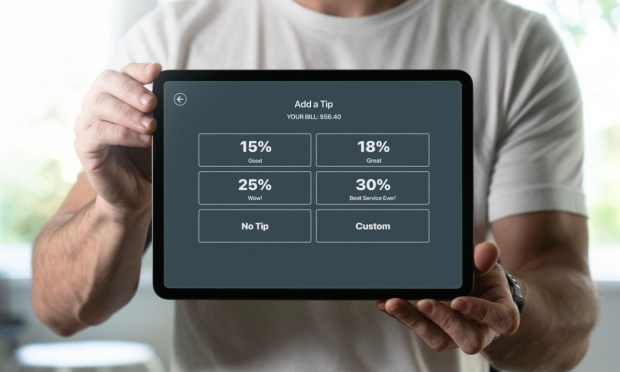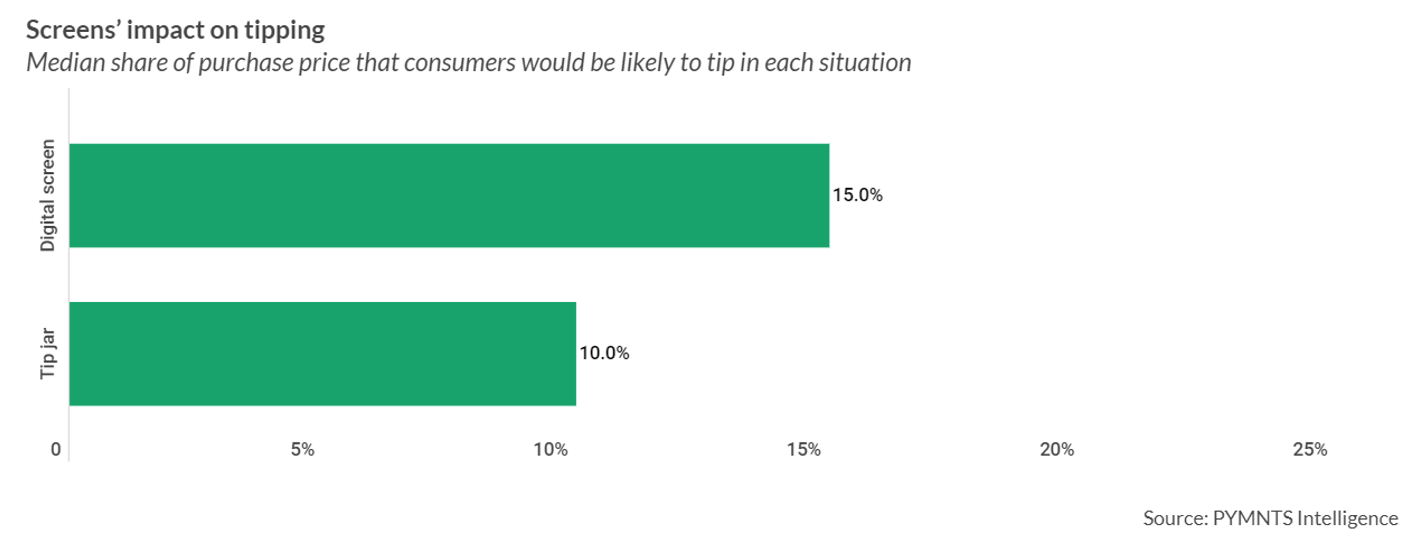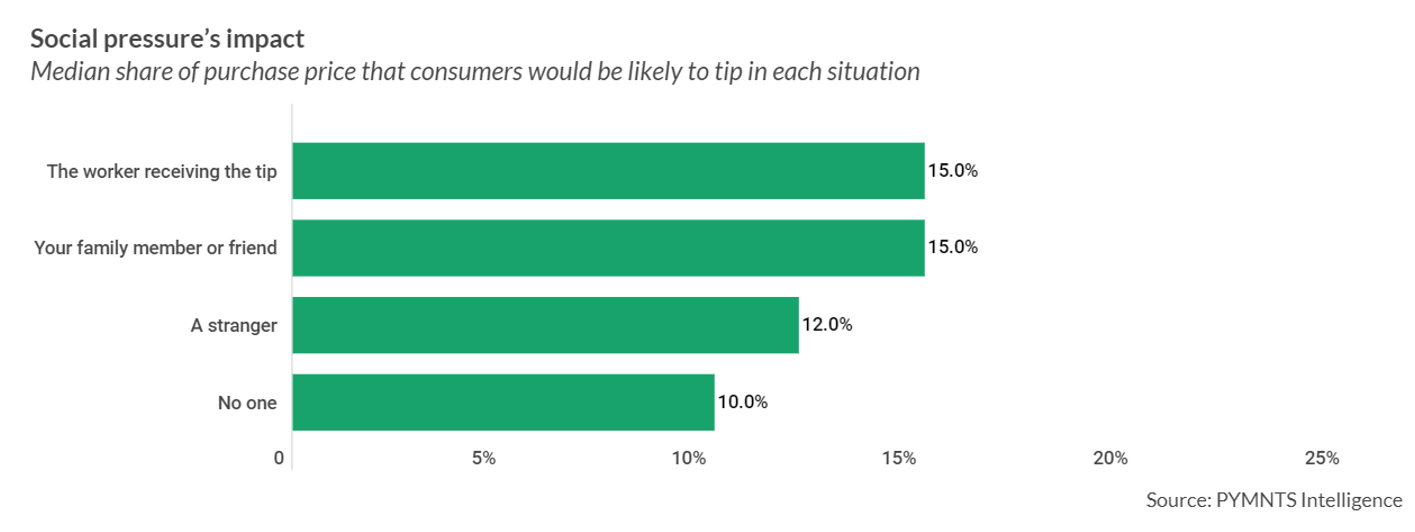34% of Consumers Say the Pressure to Tip Is Out of Control

Imagine being at the checkout, set to pay for a snack you’ve just grabbed. Suddenly, the digital screen of the point-of-sale system lights up, suggesting a tip amount significantly higher than your usual practice. The pressure intensifies when someone in line is watching, peeking at how much you’re planning to tip.
Cornered by these tactics, more consumers find themselves reaching deeper into their pockets for tips. But it doesn’t stop there — some merchants are getting in on the action, throwing tipping options into non-service transactions like self-checkout kiosks where gratuities are typically uncommon.
Consequently, consumers are not just contending with the surge in prices but also feeling the pinch from this new trend dubbed “tipflation,” with 34% arguing that expectations to tip have gotten out of hand recently.
These are some of the key findings in “Consumers Overwhelmed as Inflation Pressures Reach Tips,” a report by PYMNTS Intelligence which delves into how inflation impacts tipping and consumers’ reactions to pressure tipping in various sectors, beyond just the service industry.

Examining the data further reveals that the proliferation of digital screens has played a crucial role in shaping tipping habits, increasing the amounts customers feel compelled to tip. “Digital screens are now the most common to ask a consumer to tip across 8 in 9 normal tipping scenarios we studied,” per the study.
In fact, when prompted by a digital screen, consumers are likely to tip roughly 15%, which is 50% more than what they would tip when prompted by a traditional tip jar. Additionally, the prevalence of digital screens in various scenarios has made them the most common medium for requesting tips, with only restaurants still relying on receipts to prompt customers to tip.
For instance, during or after a taxi or rideshare service, a significant 86% of consumers were prompted to tip by a digital screen. Similarly, nearly 77% and 70% of consumers, respectively, found themselves tipping at fast-food restaurants and after personal grooming services due to the influence of these screens.
Social Pressure Drives Tips Up By 50%
Tipflation cannot be solely attributed to the digitization of point-of-sale systems. Social norms and the accompanying behavior also contribute to this phenomenon, influencing consumers’ willingness to tip and the amount they choose to give.
The study reveals that when no one is watching, consumers tip an average of 10%. However, when observed by a stranger, this figure rises to 12%. In situations where family, friends or coworkers are present, the stakes rise further, with consumers more likely to tip around 15%. Overall, social pressure increases tips by up to 50%, similar to digital screens.

The pressure around gratuities is further amplified by the fact that digital screens indirectly broadcast how much a consumer is tipping in real time, especially when others are waiting in line. This combination of old-fashioned social pressure and technological advancements has created a shifting landscape where consumers feel compelled to tip in greater amounts and in more situations, including unconventional places like self-checkout kiosks.
Interestingly, despite most consumers (75%) believing that it is inappropriate for self-checkout kiosks to have a tip option, a significant portion still comply with these requests. In fact, 59% of consumers tipped when asked to do so at a fast-food establishment, and 62% did the same at retail or grocery stores.
Compliance with these “inappropriate” tipping requests may have lasting consequences, as 65% of consumers say they would be more likely to switch merchants if asked to tip an unreasonable amount.
In essence, the convergence of digital payments, social dynamics, and consumer expectations has shifted tipping norms, birthing a new era of tipping complexities. The consequences are tangible, with consumers now contemplating not just the amount but when, where and under whose gaze they are being prompted to tip.
As we navigate this tipping point, the merging of social norms and technological prompts may redefine not only the act of tipping but also the dynamics of how consumers express appreciation in their purchase transactions.
